The Ultimate Porsche Cayenne Road Trip To The Arctic Circle
“We’re doing this to show the Average Joe that he can buy a Porsche, fix it up, and take it to the Arctic Circle,” says Trevin Hermosillo, cofounder of adventure-ready R&D firm SWAE.
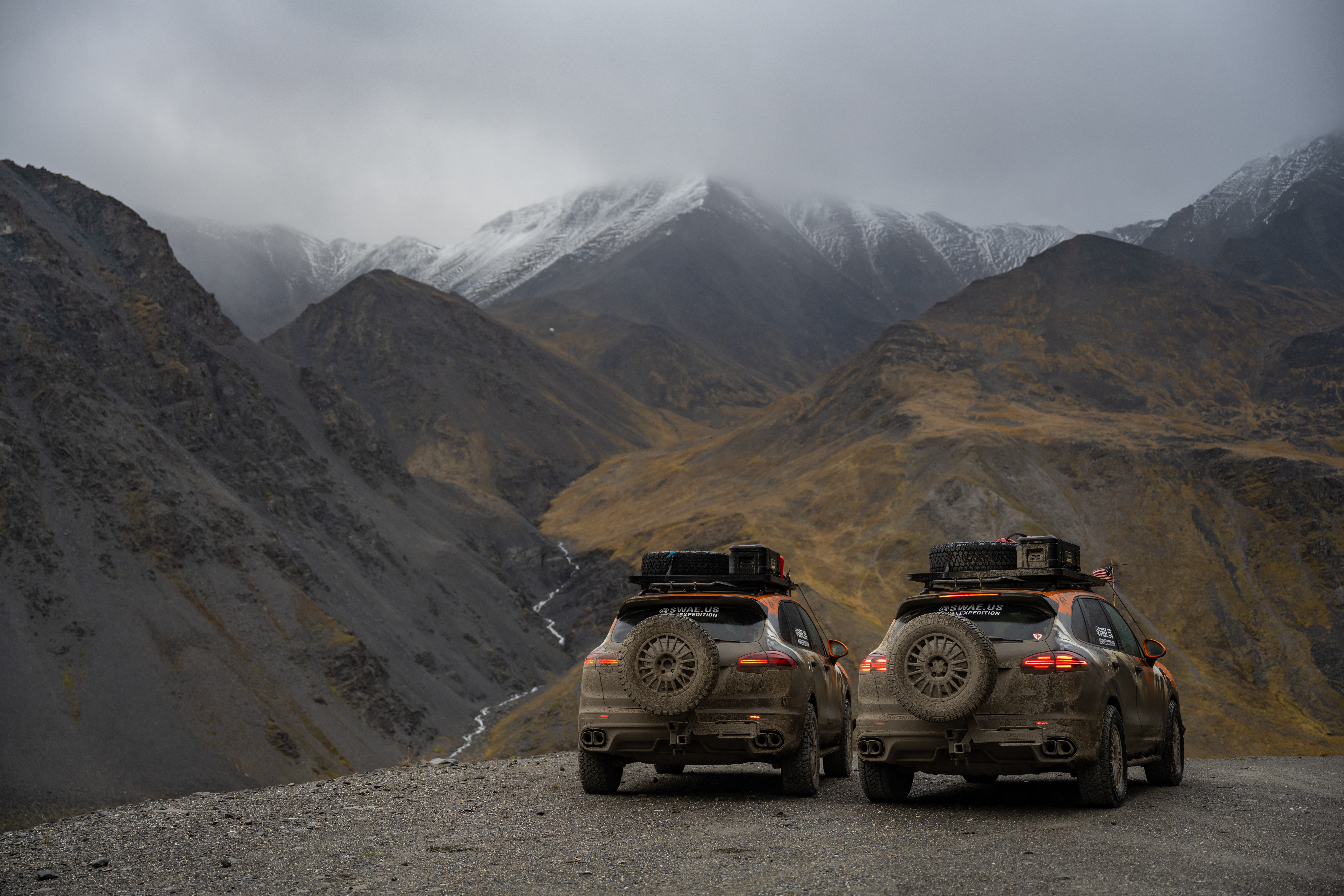
It’s a cool, bright late-August Sunday morning, and I’m in the garage of a small industrial park in Columbia Falls, Montana about to embark on an expedition that most people only dream of.
The itinerary? A 2,767-mile drive from Montana’s Glacier National Park to Prudhoe Bay, Alaska, 250 miles north of the Arctic Circle. The route includes some of the most spectacular, breathtaking scenery on earth. It’s also about as remote a drive as one can do in North America. And I’m doing it in four days.
I’m not, thankfully, doing this alone. My fellow adventurers are six of the most hardcore gearheads I’ve ever met, including Ed Bolian, who broke the Cannonball Run record in 2013 (he drove the NYC-to-LA trip in 28 hours and 50 minutes), John Ficarra, a car historian and fellow Cannonballer, and Trevin Hermosillo, a master mechanic, and co-founder of SWAE, the company behind our expedition.
I’m also grateful for how we’re getting to the Arctic Circle: in a pair of 2015 Porsche Cayenne 958 Turbos, complete with 4.0-liter twin-turbo V8s, 520 horsepower, 553 pound-feet of torque, eight-speed double-clutch transmissions, and 160-mph top speeds.
Dressed in all-black SWAE t-shirts, the team is loose and chatty as the last of the gear in loaded into the Cayennes.
“You bring your bear spray?” “Nah. But I’ve got a machete.” Everyone laughs.
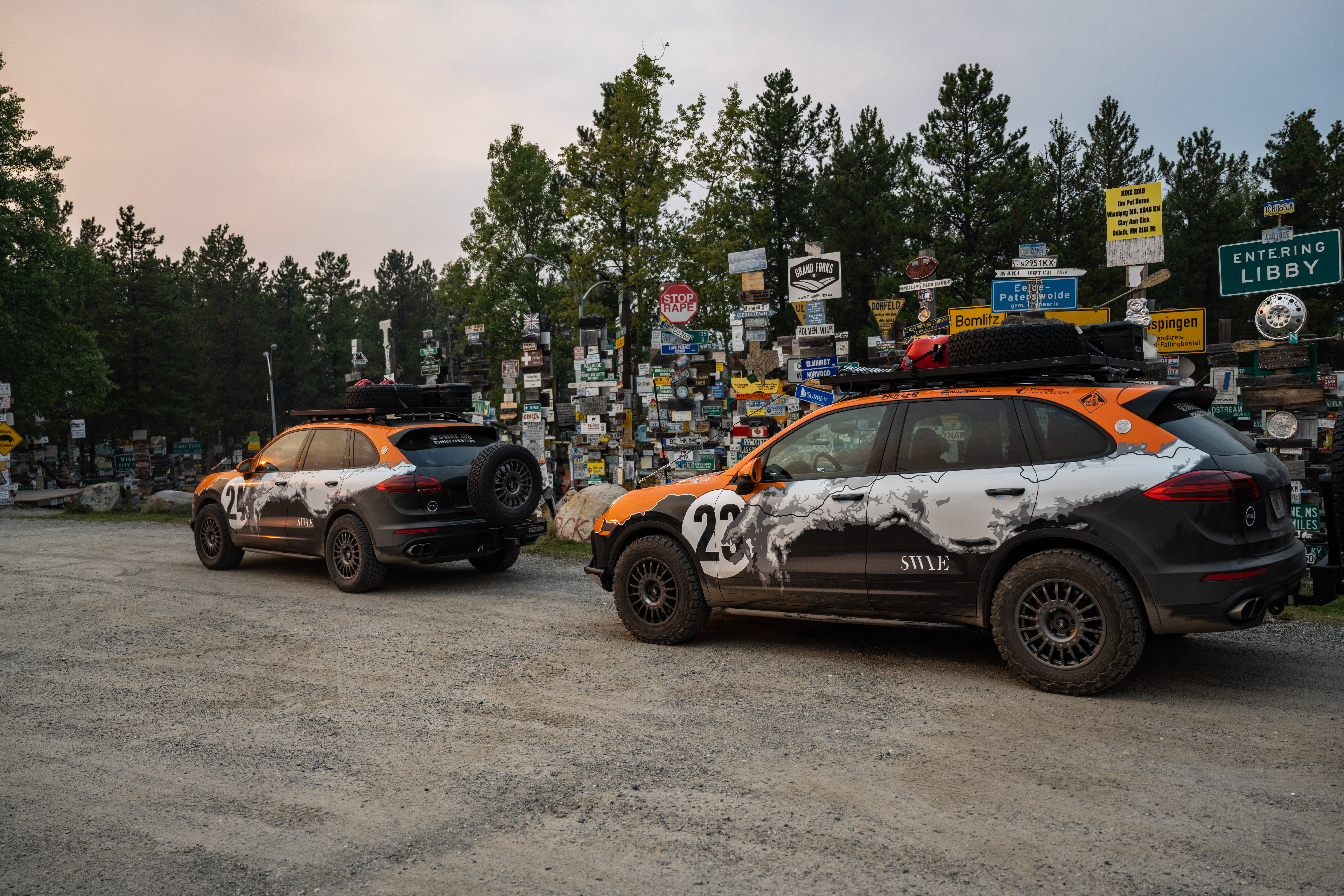
While I try to pass myself off as cool and collected, the opposite is true. Emotions swirl inside of me. First and foremost? Anticipation. Excitement. Since the start of Covid I haven’t gone on any expeditions, let alone one of this scope. The prospect of the open road, foreign frontiers and the unknown have me channeling my inner Jack Kerouac, Hunter S. Thompson and Ernest Hemingway. This is living, I tell myself.
Yet I’m also a tad nervous. Our route features stretches—some 200 miles long—of utter desolation. And potential danger lurks everywhere: inclement weather, torn-up roads, wild animals, and careening 18-wheelers kicking up windshield-smashing debris. A bonus? Massive, unpredictable wildfires rapidly spreading along parts of our route.
At 8:30 a.m., Bolian, with the frame of a small NBA forward and the voice of a mega-church preacher, gathers everyone for a group prayer.
“Lord,” says the 38-year-old. “We thank you for this beautiful morning, and the chance to explore this beautiful world. We also thank you for the friends you’ve put in our lives and the crazy ideas you put in our heads. We pray for safety, not just for us but everyone on the road and staying back here at home. We thank you for the opportunity, and please help us to be good stewards of this opportunity and let us have an awesome time.”
“Amen,” I whisper with a smile as the Porsche engines fire up. “Let the adventure begin!”
By 9:45 a.m., we’re through customs at Roosville and cruising at 70 mph through British Columbia. From the back seat, I gaze out at lush, verdant forests, dazzling blue-green lakes, ice fields, glaciers and a herd of buffalo trotting along the highway. Jaw-dropping, humbling beauty.
Hermosillo, behind the wheel, explains the long driving days (the difference between sleeping in a motel or in the car), notes that Wiz Khalifa and Snoop Dogg might be joining us in Fairbanks, Alaska, and dives into the purpose of our little expedition.
“We’re doing this,” says the 35-year-old. “To show the Average Joe that he can go buy a Porsche, fix it up, and take it to the Arctic Circle.”
“We” as in SWAE, the company he co-founded in 2021 with Allen Benedikt and Coalton Schaefer. At first glance, the trio seem unlikely bedfellows. Hermosillo, who grew up playing with ratchets, wrenches and hammers instead of Legos, is a car-crazed, college dropout who can “fix just about anything.”
The esoteric Benedikt is a former New Yorker who helms a boutique creative agency. Schaefer, affable and soft-spoken, makes his living as a highly successful venture capitalist. Yet the SWAE co-founders form a perfect balance. The big picture visionary with the bankroll? Schaefer. The branding guru? Benedikt. The hands-on, day-to-day operations guy? Hermosillo.
Perhaps more important than their complementary roles is their shared vision. They describe SWAE as an R&D company that uses technology not to distance people from human experience but enhance it. They apply cutting-edge tech to a cross-section of cars, apparel, and adventure. They’ve partnered on projects with robotics and aerospace companies such as Boston Dynamics and Jetson Aero.
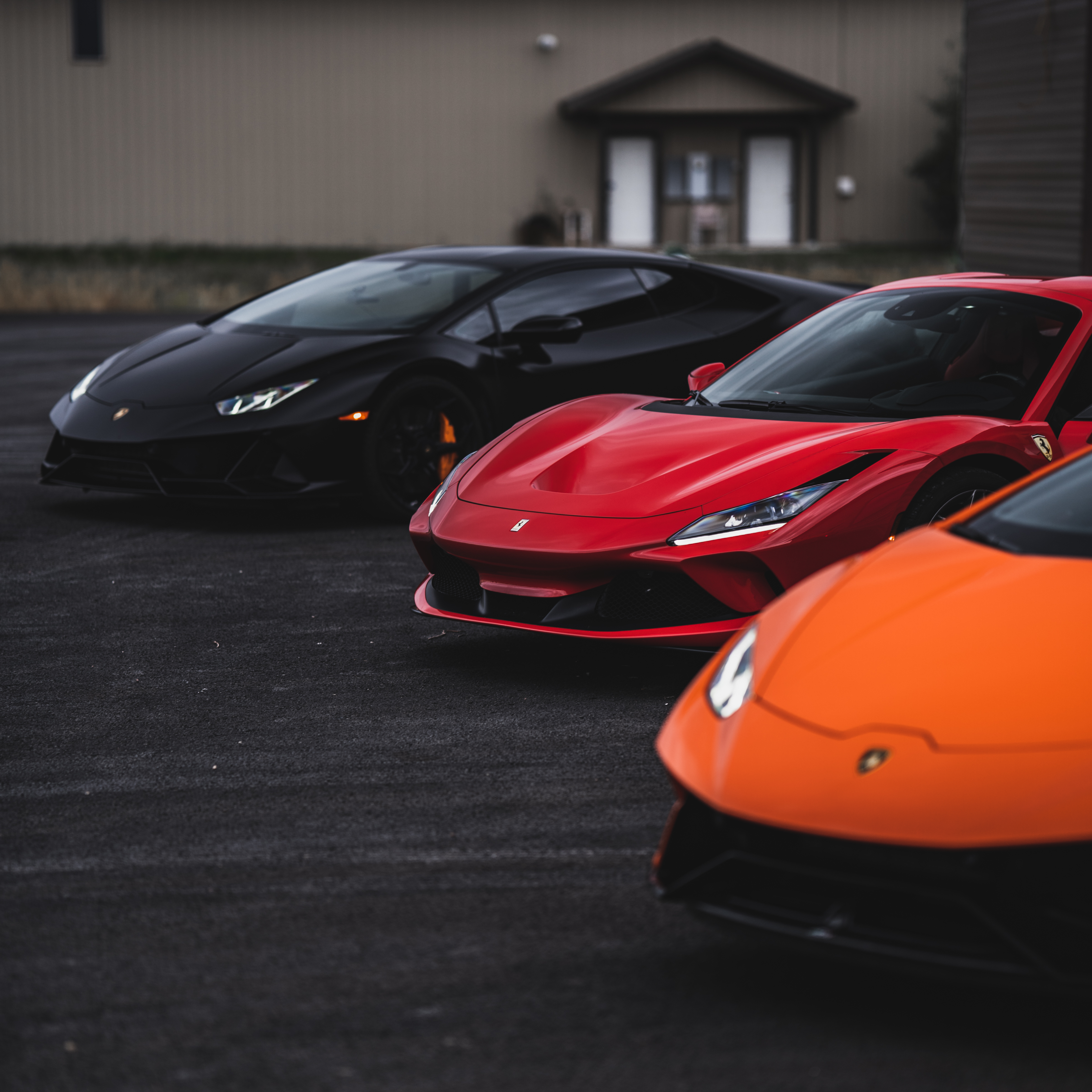
Their Columbia Falls, Montana HQ includes a state-of-the-art silk screen and 3D -printing facility (printers capable of working with plastic, carbon composites and metals) and a slew of customized, exotic cars including a Ferrari FF, a Lamborghini Huracan Performante, and a Ferrari SF90. They’re launching a line of exceptionally high-end SWAE shirts, sweatshirts, and outerwear, a marriage of “luxury craftsmanship and technology.” Adventures, like driving to the Arctic Circle, serve a dual purpose: testing their personal individual limits while inspiring others to do the same.
“SWAE’s mission is a call to action,” explains Bolian, who met Hermosillo at the 2021 Gold Rush Rally, an annual, 10-day, luxury rally car ride (that year it ran from NYC to Dallas). “To get people off the couch and live out some challenge or dream and achieve what you can. There are lots of reasons you can’t drive to the Arctic Circle, but just go out and do it. You’re much more ready than you think you are.”
In fact, our Montana-Alaska expedition is much less grandiose than SWAE’s original plan. They’d intended to use the orange Cayennes to try and break the 10-day, 19-hour driving record for the Pan-American highway, a 16,000-mile stretch of road from Alaska to Argentina. But following a landslide in Columbia which closed a section of the highway, the team had to find another option.
“We’re not here to race or set a record,” clarifies Hermosillo. “We want to show people their dreams are reachable.”
I can’t speak for the others, but by hour twelve, my dream is to get the hell out of that Porsche. As day turns to night, my legs ache, my ass feels numb and voices in my head are screaming ‘I’m done! No more!!” But no luck. Just mile after mile after mile. The road never ends.
The next afternoon, as we head into the Yukon Territory, I get the call. My turn to drive. While the views as a passenger have been stunning, I’m pumped to get behind the wheel. Yet I’m also cautious. Although ten percent larger than California, the Yukon Territory only boasts 40,000 residents. This is stark, brutal wilderness—not the sort of place for a wreck. As I focus on the road at a breezy 75 mph, I think back to Bolian’s pre-launch insights.
“The name of the game is preservation. The unexpected always happens. When you’re driving, if you find a deer or smaller in your path, hit it. A moose or bigger don’t. Elk is a judgment call.”
This is not to say we’re unprepared for mishaps. One of the keys to success/surviving a road expedition like this is prep. Both Porsches are outfitted to the max: extra fuel, Firestone tires, Braid wheels, custom rock sliders, bumpers, Oracle lights, tire repair kits, phone chargers, phone mounts, first aid kit, OVD scanner, radar scanners, full tool kit, air compressor, auxiliary lighting, fuses, wire ties, bulbs, and CB radios. To house the extra gear? Easy. The SWAE team replaced the Porsche glove boxes with custom 3D-printed shelving.
Fortunately, we don’t need to make any judgments about plowing over an animal. I’m blown away by the array of wildlife we encounter—bears, elk, moose, bighorn sheep—crossing the highway, lounging on the side of the road. But they keep their distance.
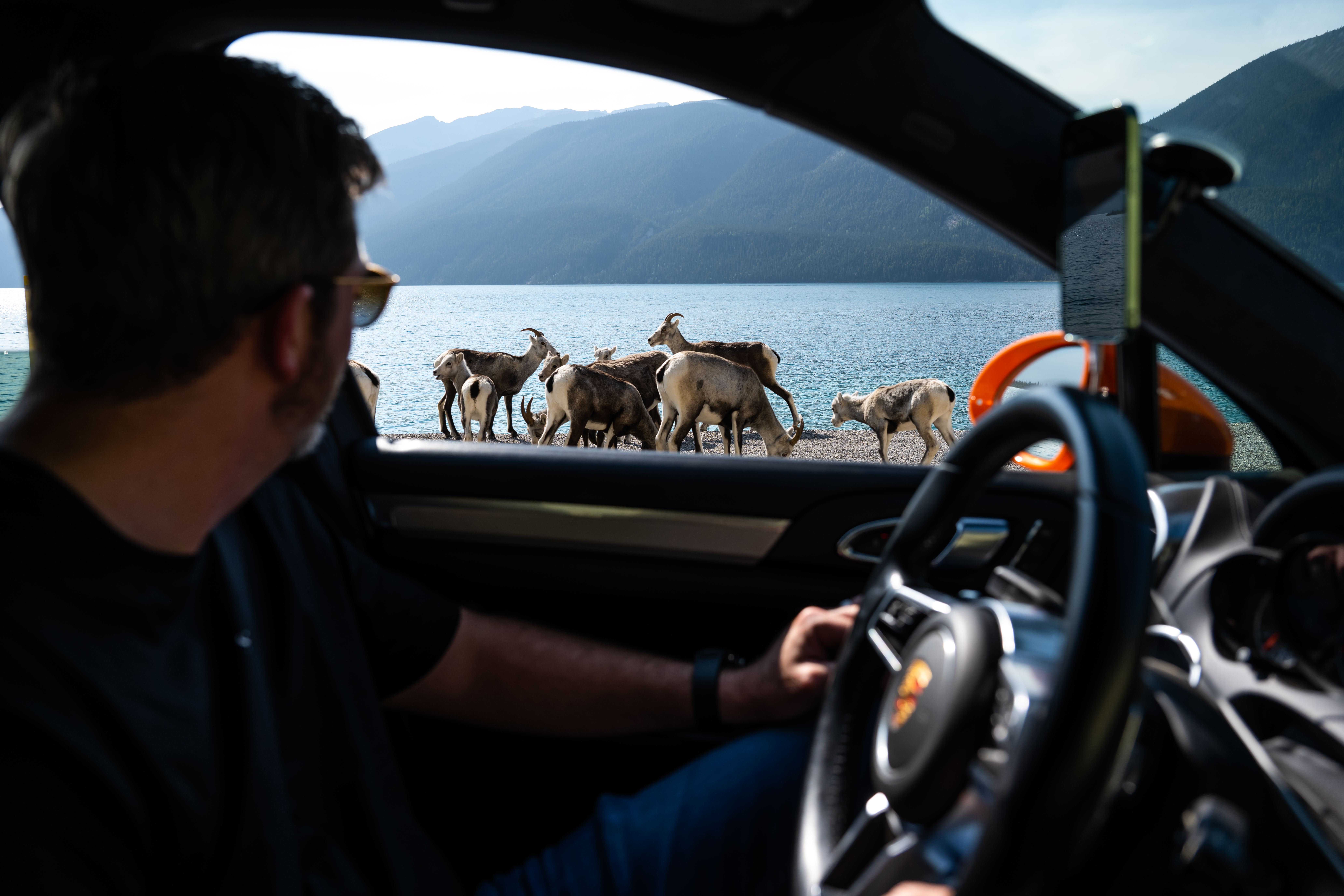
The only animals we encounter face-to-face are of the two-legged variety. Bolian has been posting pics and details of our detailed itinerary to his 185,000 Instagram followers, and every time we stop for gas or grab a quick bite, there’s a local gearhead waiting to say hello, talk about the Cayennes and grab some SWAE swag. But with hundreds of miles left to drive, the conversations are short. Need to keep moving.
We arrive in Watson Lake, population 800, to refuel and have lunch. We settle on the “best restaurant in town,” a Chinese joint called the New Nugget, serving up heaping platters of MSG and unidentifiable meats.
“How come this place wasn’t listed as one of the dangers we should avoid?” I joke as we leave the restaurant.
Not a chuckle from the group. I chalk it up to exhaustion until I realize we’re in deep shit. What seems like snow falling from the dark gray skies is ash. Turns out an uncontained wildfire a few miles to the east is barreling its way towards us. Bolian and Hermosillo discuss options. If the blaze spreads to the highway ahead, we’ll have to turn back. Take another route. In most areas, that might mean an hour or two delay. Yet in these parts, a highway closure could cost us a day or two, maybe more. Not something we can afford.
We hurry to the Porsches and set off. The smoke-filled skies continue to darken but we don’t run into any flames. The road remains open. Alaska awaits.
The next day, as we cross back into the US, I feel like a kid on Christmas morning. Alaska is one of two states I’ve never visited (North Dakota can wait), and The Last Frontier, as it’s called, is worthy of the moniker. Larger than Texas, California and Montana combined. Home to over 56 million acres of national park lands. The third least-populated state in the union.
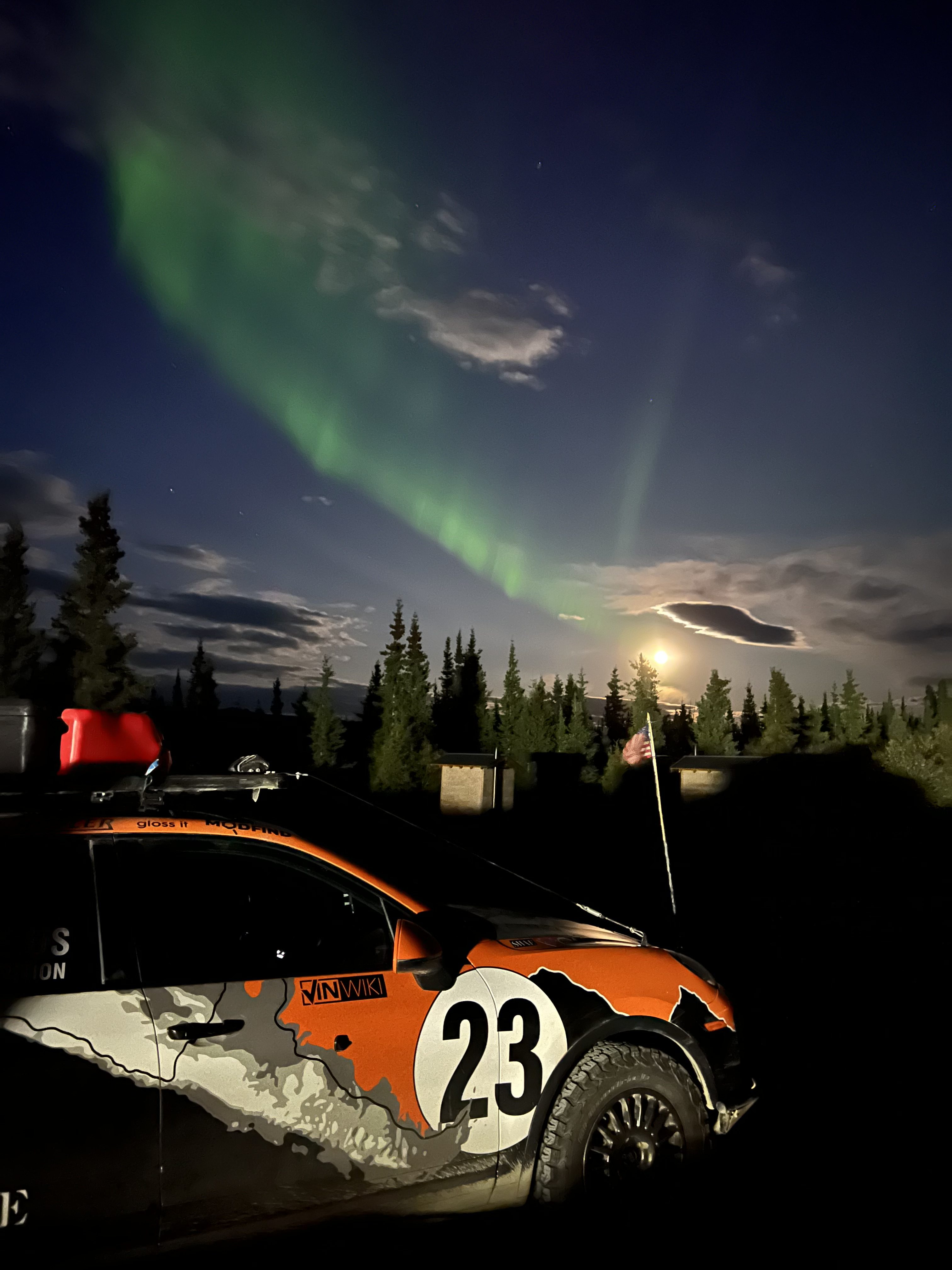
Heading towards Fairbanks, we’re treated to a perfect view of the legendary Denali, a.k.a. Mount McKinley, looming 20,310 feet into the atmosphere. Sure, I could have flown here, taken a tour or two, seen the sights. But in the Cayenne, feeling every foot of asphalt that led us here fills me with an ineffable satisfaction. With still the best yet to come.
After a five-star meal and a solid night’s rest, we set out early for “the best”: 495 miles to Prudhoe Bay, a.k.a. Deadhorse, Alaska. For the past two days, we’ve settled into to a fine-tuned road trip rhythm: alternating drivers, switching cars, making regular bathroom/food/scenic-view stops. and the 15-hour days fly by. Yet again, I’m reminded of our pre-launch briefings.
The only way to Deadhorse? Via the 414-mile Dalton Highway, the second half of which is the longest stretch of un-serviced road in North America. No food, gas, hospitals, motels, police stations, cell phones or internet service. What will you find on the Dalton? Semi-trucks. Lots and lots of them, hauling equipment and hauling ass. We’d been warned that these rigs do, in fact, own the road and don’t give a shit if the gravel they kick-up shatters your windshield or the momentum they build to get up steep inclines forces you into a ditch.
Hermosillo, to his credit, goes the diplomat route and begins to chat with the truck drivers via CB.
“Hey,” he chirps merrily. “We’re here in a couple of orange Cayennes hoping to make good time to Deadhorse. Appreciate any help. We don’t want to get in your way.”
It proves the magic bullet. Word spreads and as our orange roadsters approach rig after rig, they pull to the side and waive us past like the Red Sea parting for Moses. We make good time, whizzing past the Arctic Circle, grabbing a quick bite in Coldfoot, and crossing the Brooks Range at Atigun Pass, at an altitude of 4,800 feet. On this side of the range, we find nothing but flat, tree-less tundra stretching as far as the eye can see.
Finally, we arrive. Deadhorse. Housing consists of modular trailers on stilts. Flora and fauna? Basically zero. Trucks, machinery, and oil tanks litter the horizon. Permanent residents number between 25-50, but beneath the nearby Arctic Ocean sits the eighth-largest oil field in the world and the temporary population—engineers, laborers, etc.—can grow as high as 3,000.
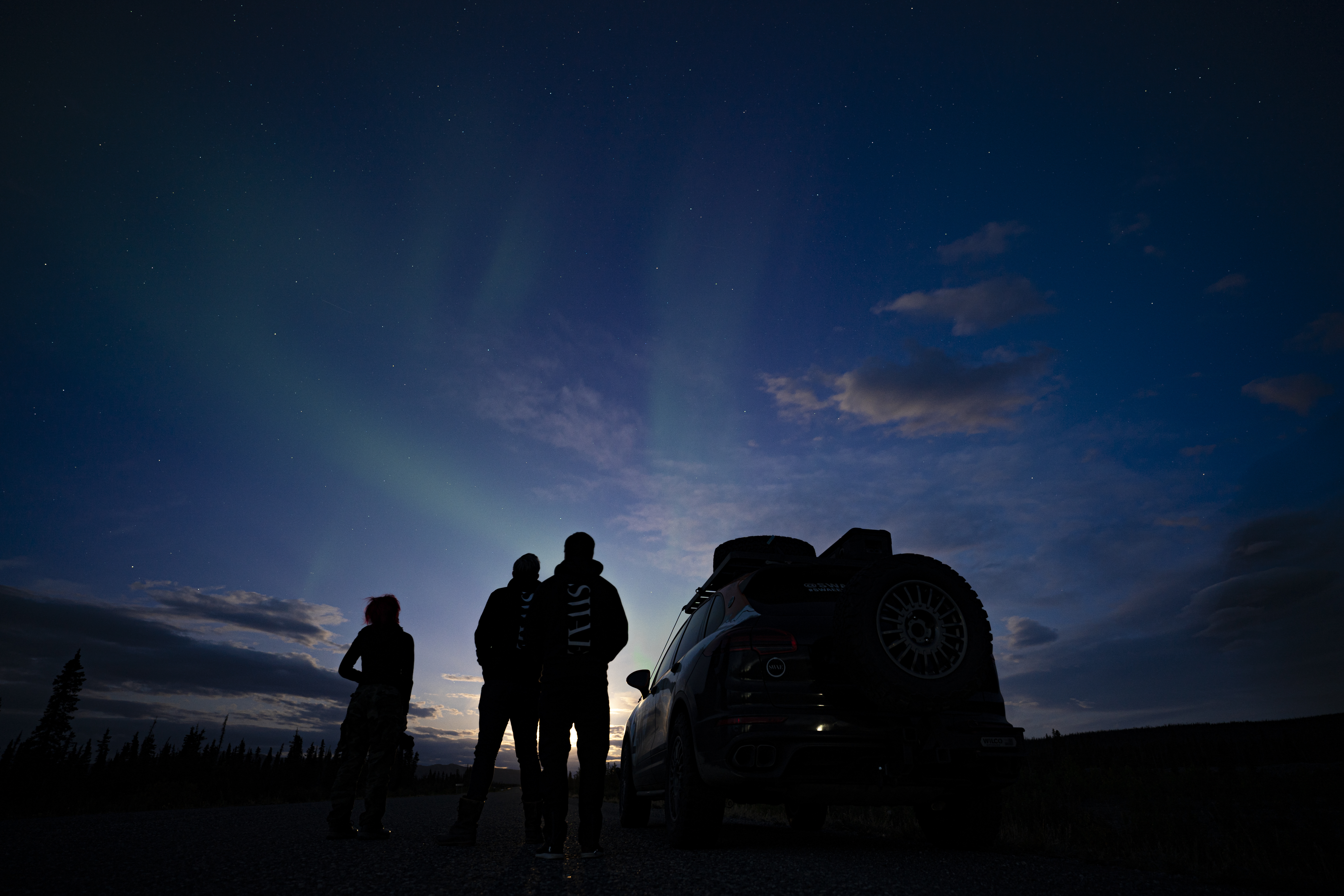
It is, without question, The Last Frontier. There’s a distinct otherworldliness, as if we’ve landed on the moon. Walking to the bus to take us to the ocean (for security and safety reasons, reservations and background checks are required), I think of how relatively few people have ever stepped foot on this land. How a little group left northern Montana, and despite facing a daunting drive and no shortage of uncertainty, found what we are looking for.
Gazing out at the dark waters of the Arctic, I’m not worried about the trip home. I’m thinking about my next adventure.
